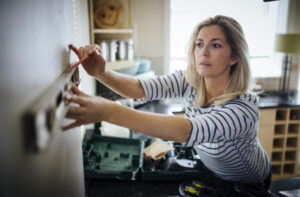 Acrylic is usually the medium that beginner painters start with. It’s easy to use, easy to clean up, and super versatile when it comes to painting all sorts of subjects – portrait or landscape.
Acrylic is usually the medium that beginner painters start with. It’s easy to use, easy to clean up, and super versatile when it comes to painting all sorts of subjects – portrait or landscape.
If you’re stuck on where or how to begin your very first acrylic painting, we recommend trying out paint by numbers. There are plenty of paint by numbers for beginners that will help you learn the very basics before you’re thrown in at the deep end with a blank canvas. This is your learning journey.
In the meantime, we have eight acrylic painting tips that can make the whole beginner process easier.
Let’s paint!
1. Use synthetic brushes
Make sure you’re using the right kind of brushes. Because it’s a medium-bodied paint, acrylic adheres much better to thicker, more bristly synthetic brushes – any local arts and crafts will have some. You just have to look in the right places.
2. Use a reference
Even the most talented painters sometimes struggle painting from imagination – so make sure you have a reference in front of you. Don’t make it too hard for yourself.
Use a photo or paint something you can physically see in the room or out the window. That way you can keep referring back to the subject to get the lines and composition just right.
3. Paint fast
The fast-drying nature of acrylic paint means you need to paint relatively fast. Once acrylic has dried on your canvas, that’s it.
If you find your working speed is far too slow for acrylic, try mixing in acrylic paint extenders to add moisture and keep the paint wetter and usable for longer.
4. Don’t skimp on the paint
It’s best to paint thicker, denser layers rather than thin, transparent layers. That way your painting will really pop with bigger and brighter colors. Less definitely isn’t more when it comes to acrylics!
5. Use bigger and wider strokes
Wider strokes are better when creating texture in certain things like the sea, skies, or greenery. Save the thinner, finer strokes for more intricate details. It’s all about understanding the subject by looking at the bigger picture – don’t stress about the minor things.
6. Paint with contrasting colors
To make the painting look more aesthetically interesting and realistic, try painting with contrasting warm colors (oranges, reds, yellows) and cool colors (blues, purples).
7. Experiment with different techniques
Acrylic is a super adaptable and easily-blended paint, so don’t be afraid to play around with it. Put the brush down once in a while and use your finger or a palette knife. Different tools will create different textures and effects, so feel free to experiment to your heart’s content.
8. Remember you can always paint over mistakes
Don’t be afraid to make mistakes – even the world’s most talented painters make them.
You can always paint over stray marks or wrong colors at the end once everything is dry. Find your unique style by learning from your blunders, not avoiding them.
